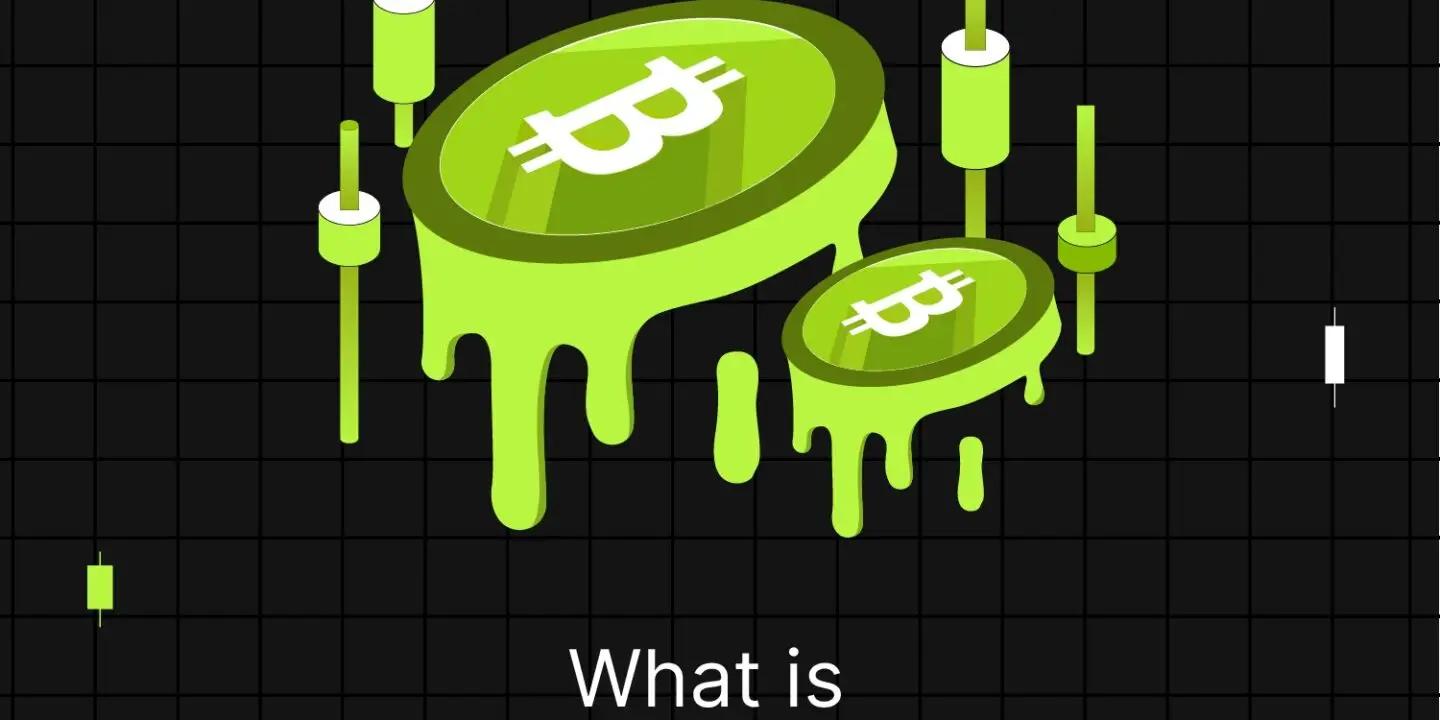
In crypto trading, Bitunix has implemented an advanced liquidation mechanism for futures positions, aiming to provide a more secure and transparent trading environment. This new system addresses key aspects of liquidation criteria, estimated liquidation prices, and the rationale behind liquidation before reaching the estimated Liquidation price, ensuring traders understand the risks involved.
What is the Estimated Liquidation Price?
The Estimated Liquidation Price on Bitunix shows the current price at which the trader’s position is closed by the exchange for insufficient margin. In trading with leverage, the profit/loss made is calculated in a manner that will make the necessary margin maintenance level get to the required liquidation price.
The estimated market price to stop out is arrived at in such a way that, when this is achieved, it leads to the closure of the particular position so as not to allow losses to be made which would result in the use of the borrowed funds.

Calculation of the Estimated Liquidation Price
On Bitunix, the calculation of the Estimated Liquidation Price assumes a 100% correlation between assets when multiple perpetual positions are held. This conservative approach considers the worst-case scenario where all assets might move against the position simultaneously.
The price is derived by analyzing potential losses and the corresponding market price movement that would trigger these losses, ensuring traders are aware of their risk exposure.
Liquidation Criteria for Futures Positions
Futures Trading Liquidation When trading in futures, the liquidation criteria that Bittunix uses for futures positions. These mechanisms help to level out risks between the trader and the platform and help to limit the losses that can be incurred especially in a volatile market
Risk Ratios and Liquidation
The liquidation of futures positions occurs when the position risk ratio hits 100%, indicating that the trader’s margin balance has fallen below the required maintenance margin. This critical threshold prompts either a reduction in the position or complete liquidation, thus safeguarding the involved parties from deeper financial risk.
Differences Between Liquidation Price and Estimated Liquidation Price
While both terms sound similar, they serve different purposes and are influenced by distinct factors within the trading environment on Bitunix.

Market Conditions and Price Estimates
The Estimated Liquidation Price is primarily a reference point, influenced by ongoing market conditions and the account’s current state. Traders need to recognize that this price is not static and can change with fluctuations in the market, which might lead to discrepancies between the estimated and actual executed liquidation prices.
Execution of Liquidation Orders
Actual liquidation orders are executed at what is known as the bankruptcy price, which can differ from the estimated liquidation price due to market volatility. This discrepancy is often observed during rapid price movements, where the executed liquidation price may deviate significantly from the estimated one.
Early Liquidation Before Reaching Estimated Price
Traders on Bitunix might notice their positions being liquidated before the last market price reaches the estimated liquidation price. This is because Bitunix uses the marked price for profit and loss (PnL) calculations and position liquidation.
The mark price is derived from the spot index price and the basis difference, which can diverge from the last traded price, leading to early liquidation to mitigate potential losses.
Why Positions Are Liquidated Before the Last Price Reaches the Estimated Liquidation Price
Understanding the mechanics behind position liquidation on Bitunix is crucial for managing expectations and planning strategies accordingly.
The Role of Mark Price in Liquidations
Bitunix utilizes the mark price to calculate profit and loss (PnL) and to determine liquidation events. This price is often derived from a composite of several major exchange prices and may differ from the last traded price.
The use of mark price helps mitigate the risks associated with price manipulation and extreme volatility, providing a more stable basis for liquidation decisions.
Liquidation Criteria for Futures Positions
The liquidation criteria for futures positions on Bitunix are straightforward. When the position risk ratio rises to 100%, meaning that the trader has a margin balance below the maintenance margin, a position is required to be closed or reduced.
This criterion helps in the closure of trading positions not to allow the trader or the trading platform to incur huge losses that may be beyond the available margin.
Margin Management: Isolated Margin and Auto-Margin Replenishment
Bitunix offers isolated margin mode and auto-margin replenishment (AMR) to manage margins effectively. Isolated margin mode does not draw additional margin to maintain a position, limiting potential losses.
In contrast, AMR automatically replenishes the margin of a soon-to-be-liquidated position using the available margin, helping traders maintain their positions during market fluctuations.
Exit Strategies: TP/SL/Trailing Stops
Bitunix offers several ways to exit trades, such as Take-Profit, Stop-Loss, and Trailing-Stop orders. These automated orders allow traders to close their positions under specific conditions, thus avoiding liquidation. TP orders close positions at a profit, SL orders limit losses, and Trailing-Stop orders follow the highest price point to lock in profits and minimize losses.
How to Calculate Crypto Futures Liquidation Price
Every exchange has its own exact formula. Below is a simplified framework that shows the moving parts. It uses mark price, not last price, and ignores fees, funding, and tiered maintenance for clarity.
Let:
- Q = position size in units of the asset
- E = entry price
- IM = initial margin posted for the position
- MM = maintenance margin requirement for the position
- P = mark price
Unrealized PnL (long) = Q × (P − E)
Equity = IM + Unrealized PnL
Liquidation occurs when Equity = MM.
Long position (isolated margin, simplified)
IM + Q × (P − E) = MM
Solve for P:
P = E + (MM − IM) ÷ Q
Since IM is typically larger than MM, the term (MM − IM) is negative. That means the long liquidation price is below entry.
Short position (isolated margin, simplified)
For shorts, Unrealized PnL = Q × (E − P).
IM + Q × (E − P) = MM
Rearrange:
P = E + (IM − MM) ÷ Q
(IM − MM) is positive, so the short liquidation price is above entry.
Worked example
- Long BTCUSDT perpetual
- Entry E = 30,000
- Size Q = 0.50 BTC
- Initial margin IM = 1,500 USDT
- Maintenance margin MM = 150 USDT
- Funding, fees, and tiering ignored for simplicity
P = 30,000 + (150 − 1,500) ÷ 0.50
P = 30,000 + (−1,350 ÷ 0.50)
P = 30,000 − 2,700
Estimated long liquidation price ≈ 27,300
Increase leverage or reduce IM and the liquidation price moves closer to entry. Increase MM and it also moves closer to entry.
Keywords used: how to calculate crypto futures liquidation price, liquidation price formula leverage maintenance margin, liquidation price.
Notes on cross margin and platform differences
- Cross margin uses your available account equity to support the position. That can push liquidation further away, but it also places more of your balance at risk.
- Maintenance rates are often tiered by position size. Large positions can have a higher MM rate.
- Fees, funding, auto-deleveraging, and circuit breakers can affect actual outcomes. Always refer to Bitunix’s latest help docs for the platform’s exact method.
Comprehensive Liquidation Mechanisms on Bitunix
- Partial liquidation tries to reduce position size to bring risk back in line.
- Total liquidation closes the position when equity is near depletion.
- Isolated margin caps risk to the margin assigned to a single position.
- Auto Margin Replenishment (AMR) can transfer available funds to support a stressed position if enabled.
- TP, SL, and Trailing Stop give you proactive exits that can prevent liquidation events.
Conclusion
For traders on Bitunix, understanding and monitoring the Estimated Liquidation Price is vital for effective risk management in leveraged trading. By comprehending how liquidations are triggered and what factors influence liquidation prices, traders can better prepare for the inherent risks of the cryptocurrency markets.
This knowledge is crucial for both new and experienced traders aiming to navigate the complexities of futures trading on platforms like Bitunix.
FAQs
What does “estimated liquidation price” mean?
Estimated liquidation price is the live calculation that shows the mark price at which your leveraged position would be liquidated based on your current margin, leverage, PnL, and maintenance requirement. It updates in real time and is intended as a risk reference, not a guaranteed execution level.
How to calculate crypto futures liquidation price?
You set Equity = Maintenance Margin and solve for the mark price. For a long in a simplified isolated setup: P = E + (MM − IM) ÷ Q. For a short: P = E + (IM − MM) ÷ Q. Real platforms include fees, funding, tiered MM, and cross margin effects, so always check the Bitunix calculator or specs.
What does liquidation mean in crypto trading?
Liquidation means the exchange forcibly closes your leveraged position because your equity no longer meets the maintenance margin. It is an automated risk control to prevent losses from exceeding collateral.
What does it mean to get liquidated in crypto?
Getting liquidated means your position hit the liq price and was closed by the system. You lose the initial margin tied to that position and possibly additional fees, while any remaining equity is retained in your account according to platform rules.
What is the difference between liquidation price and estimated liquidation price?
Liquidation price is the actual mark price that triggers liquidation. Estimated liquidation price is a moving forecast that reflects current conditions. The estimate can shift as your balance, PnL, fees, or maintenance requirements change.
Why might liquidation happen before reaching the estimated price?
Bitunix uses mark price, not last traded price, for PnL and liquidation checks. If the mark price reaches the trigger while the last price has not, liquidation can occur first. This reduces manipulation risk and reflects a fairer reference during high volatility.
How do margin and leverage affect your liquidation price?
Higher leverage reduces initial margin per unit of exposure, which brings the liq price closer to entry and increases liquidation risk. Higher maintenance margin or larger position size can also move the liquidation price closer to entry, especially under tiered MM schedules.
About Bitunix
Bitunix is one of the world’s fastest growing professional derivatives exchanges, trusted by over 3 million users across more than one hundred countries. Ranked among the top exchanges on major data aggregators, Bitunix processes billions in daily volume and offers a comprehensive suite of products including perpetual futures with high leverage, spot markets, and copy trading. Users can trade bitcoin and other major cryptocurrencies on the platform, taking advantage of advanced trading features. Known for its Ultra K line trading experience and responsive support, Bitunix provides a secure, transparent, and rewarding environment for both professional and everyday traders. Bitunix Academy adds structured lessons so you can build skills while you trade.
Bitunix Global Accounts
X | Telegram Announcements | Telegram Global | CoinMarketCap | Instagram | Facebook | LinkedIn | Reddit | Medium
Disclaimer: Trading digital assets involves risk and may result in the loss of capital. Always do your own research. Terms, conditions, and regional restrictions may apply.










One reply on “What Is The Liquidation Price in Crypto”
I think other website owners should take this internet site as an model, very clean and good user genial design.